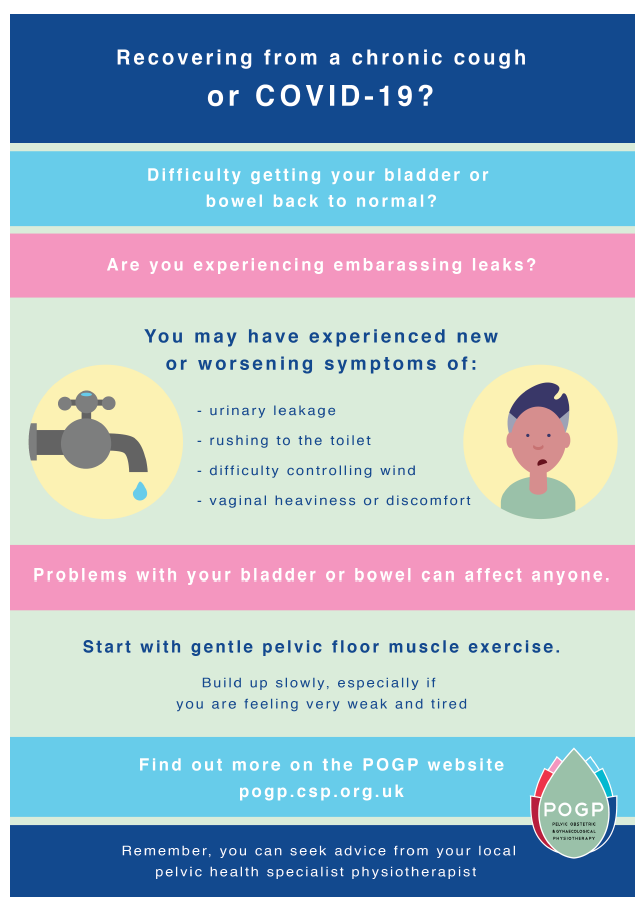Post Covid Pelvic Floor Dysfunction
Year published: 2020

The most common symptom of coronavirus infection is a continuous cough which can last for several weeks after the initial infection. Coughing is known to put pressure on the pelvic floor muscles and increase the risk of developing stress urinary incontinence (SUI) and vaginal prolapse. There is much talk about the need for rehabilitation in people recovering from coronavirus, but so far very little on pelvic floor muscle rehabilitation specifically.
Supervised pelvic floor muscle training is recommended by NICE (1) as the first line treatment for SUI and prolapse and specialist physiotherapists are trained to deliver this type of rehabilitation.
Pelvic, Obstetric & Gynaecological Physiotherapy (POGP) have developed an information poster which is free to download advising people suffering with the after-effects of coronavirus coughing to seek help from a specialist physiotherapist . Although not a quick fix, patients who undergo a pelvic floor rehabilitation programme are 8 times more likely to report a cure than those who do not do the exercises. (2)
The effects of incontinence and prolapse are distressing and with a relatively simple approach many people can improve their quality of life. POGP are encouraging people to seek help from a specialist physiotherapist in their area ; some clinics are offering initial teleconsultations / phone call advice with face to face consultations being offered at a later stage when government guidelines on travel and hospital attendance is reviewed.
1 NICE Urinary incontinence and pelvic organ prolapse in women: management
NICE guideline [NG123] Published date: 02 April 2019 Last updated: 24 June 2019
2 Dumoulin C, Cacciari LP, Hay‐Smith EJC. Pelvic floor muscle training versus no treatment, or inactive control treatments, for urinary incontinence in women. Cochrane Database of Systematic Reviews 2018, Issue 10. Art. No.: CD005654. DOI: 10.1002/14651858.CD005654.pub4.
Katie Mann 13.5.20
POGP
Download Good Practice Statement
Back to Resources